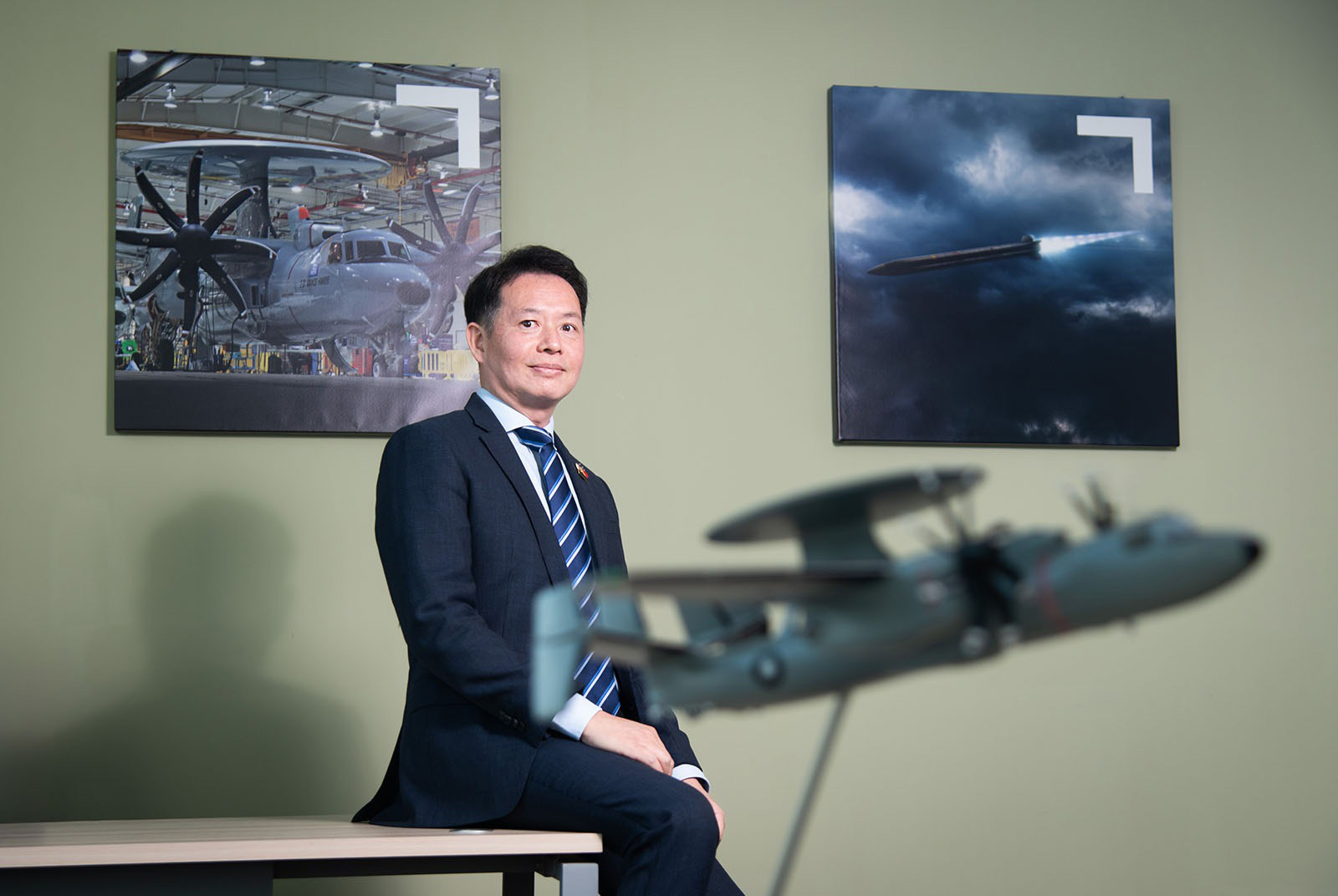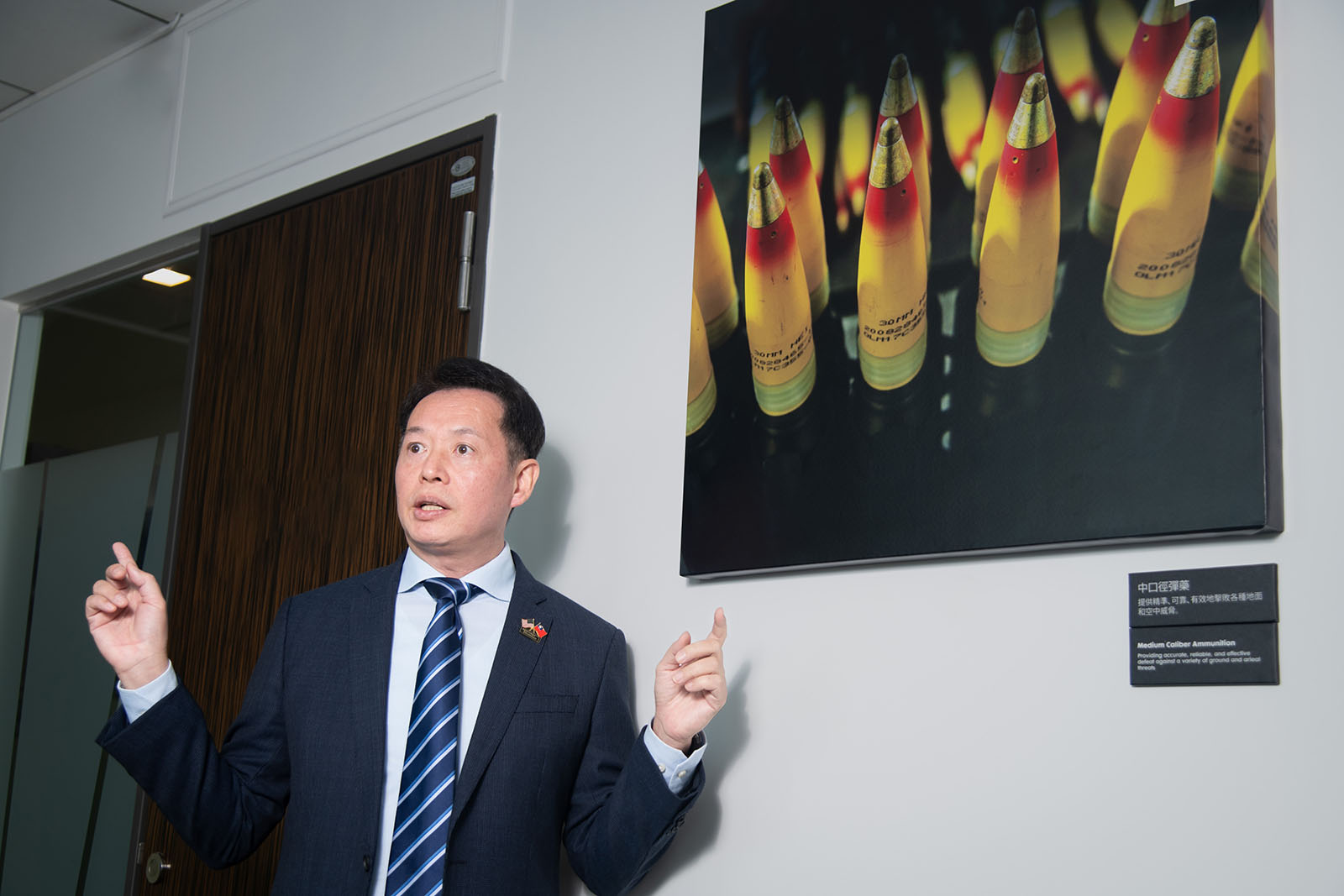U.S. weapons maker Northrop Grumman to add Taiwan to its supply chain

Source:Ming-Tang Huang
Northrop Grumman, a US-based multinational aerospace and defense technology company, has opened a new office in Taiwan, preparing to invest US$100 million in Taiwan’s domestic defense industry. The production of 30 mm chain gun ammunition on the island under license has been confirmed.
Views
U.S. weapons maker Northrop Grumman to add Taiwan to its supply chain
By Silva ShihCommonWealth Magazine
Northrop Grumman designed and built the F-14 Tomcat strike fighter which brought it to Hollywood fame in Top Gun. They engineered Apollo 11’s lunar module, the vehicle that landed Neil Armstrong as the first man on the moon. And the F-5E Tiger II tactical fighter jets, which Taiwan’s military will retire in late 2024 after 50 years of service, were produced under a co-production and licensing agreement with this defense technology firm.
Last year, Northrop Grumman was the fourth largest U.S. defense and space contractor in terms of revenue, behind Lockheed Martin, Raytheon, and Boeing.
In recent years, Northrop Grumman has acquired several small- and medium-sized space technology companies. Its portfolio includes ammunition for ground, air and naval forces, large carriers and systems, radar and satellites.
After a hiatus of ten years, Northrop Grumman returned to Taiwan earlier this year, establishing an office in Taipei. They hired Fisher Huang, who previously worked for Honeywell Aerospace in Taiwan, most recently as Customer Business Director for Taiwan Defense, as country lead executive.
At the Taipei Aerospace & Defense Technology Expo in September, Stephen O'Bryan, corporate vice president and global business development officer of Northrop Grumman publicly announced that “Northrop Grumman will be committing to US$100 million annually of opportunities for Taiwan to become part of Northrop Grumman's global supply chain".
Why did Northrop Grumman decide to invest in Taiwan now?
Increased U.S. arms sales to Taiwan benefit Northrop Grumman
First, in its global expansion strategy Northrop Grumman clearly considers geopolitical factors and the international market.
The only new overseas offices that the company opened in 2023 are based in Poland, which neighbors war-torn Ukraine, and Taiwan.
“If we want to supply Taiwan, then the fastest way is, of course, producing locally,” explains Huang.
Northrop Grumman counts among the large American defense contractors that receive orders for the large arms packages that Washington has approved for sale to Taiwan in recent years. Among the weaponry that Northrop Grumman provides to Taiwan are E-2K Hawkeye early-warning aircraft, APG-83 radar systems for the F-16V fighter jets of Taiwan’s Air Force, ammunition for 30 mm chain guns which are mounted on Clouded Leopard armored vehicles used by Taiwan’s Army, as well as the Volcano automated land mine delivery system.
But as Huang points out, there is more to the decision to open an office in Taiwan than meets the eye. “Don’t forget the impact that the pandemic had on supply chains. We need to distribute the supply chain risk.”
US defense industry – 40 years of ups and downs
In early 2023, the National Defense Industrial Association (NDIA) stated in its annual Vital Signs report on the state of the defense industry and military readiness that the number of small businesses participating in the defense sector has declined by over 40 percent in the last decade.
Due to the peace dividend after the end of the Cold War in the 1990s, the defense industry has continued to shrink worldwide. Now faced with a lack of a stable production capacity, the U.S. Department of Defense has been shoring up its supply chains, increasingly adding commercial procurement channels and regularly evaluating relevant suppliers.
“During the pandemic many manufacturers folded, the situation became unmanageable,” explains Huang.
At the same time, the return of great power competition on the global stage and ongoing conflicts have increased pressure on already fragile supply chains. Stockpiles of weapon systems and munitions have been depleted due to the currently stalemated war in Ukraine. And the continuing war between Israel and Hamas, following the terrorist Hamas attack of October 2023, is further fueling military demands, highlighting the supply bottleneck.
The consequences are even felt in Taiwan as several promised arms packages totaling US$19 billion have yet to be delivered. Last September, a U.S. State Department official reiterated in a congressional committee that the backlog is not related to procedural delays in the review of military sales but rather caused by systemic issues such as insufficient industrial capacity and long production timelines.
Tony Hu, a former U.S. Department of Defense Senior Director of China, Taiwan, and Mongolia, points out “The U.S. military industry thrived during the second world war, relying on a huge workforce. But now it has lost production flexibility.”
This is one of the reasons why the Pentagon has drawn up its first-ever “National Defense Industrial Strategy”. It focuses on public-private partnerships to make supply chains more resilient. This includes outsourcing weapons and munitions production to trusted allies.
This shift in U.S. military procurement strategy is reflected in Northrop Grumman’s investment in Taiwan.
“If we can produce locally, allowing Northrop Grumman to procure, then Taiwan does not need to compete [for production capacity] of American suppliers to meet its defense needs,” notes Huang.
As Northrop Grumman’s first Country Lead Executive for Taiwan, Huang has an ideal professional background for jump start the localization of the company’s supply chain.
Veteran of Taiwan-US military exchanges
The 53-year-old Huang, who looks back on a long career in Taiwan’s Air Force, has been involved with armament cooperation in various roles. Following a posting to Taiwan’s unofficial embassy in Washington, he served as the deputy Air Force program manager at the American Institute in Taiwan (AIT), before joining American defense contractor Honeywell.
Huang graduated from the Department of Mechanical and Aerospace Engineering at Taiwan’s Chung Cheng Institute of Technology. After joining the Air Force’s Logistics Command, he gained experience during the gradual replacement of the Air Force’s F-104 fighters with Taiwan’s home-grown Indigenous Defense Fighter (IDF). When Taiwan was planning to procure Mirage fighter jets from France, Huang was sent to Toulouse, France, to earn a Master of Science in aerospace engineering at the prestigious ISAE-SUPAERO.
“I think I was a one-eyed man in the land of the blind,” says Huang in recalling the times when the IDF entered service in the 1990s. For Huang the opportunity to work with two generations of military aircraft was an eye-opener.
Subsequently, he was dispatched to Taiwan’s Defense Mission in the United States in Washington D.C., where he was responsible for defense technology cooperation and exchanges, and conferences between defense industry representatives from both sides. After Huang returned to Taiwan, the AIT asked him to take care of military exchanges and arms sales.
As he tackles the new task that Northrop Grumman has given him, Huang is again looking to exchange opportunities in the defense sector.
Taiwan to join global military supply chain with artillery shells
The U.S. Defense Security Cooperation Agency (DSCA) announced in August 2023 the sale of 30 mm shells for chain guns to be mainly supplied by Northrop Grumman.
Huang has already signed a contract with ammunition and military equipment Factory 205 under the Armaments Bureau of the Ministry of National Defense for production of 30 mm shells. Northrop Grumman will provide the raw materials for the shells which are to be filled under license in Taiwan.
A defense analyst notes that the explosives that are filled into the shells are highly sophisticated. The chemical composition of explosives in a shell is directly related to the accuracy of the weapon. “Letting Taiwan do the filling on its own is a good thing,” concludes Huang.
“In early 2024 we will help Factory 205 to set up the production line,” explains Huang. “Aside from satisfying Taiwan’s demand, [Factory 205] might become one of Northrop Grumman’s global suppliers once they have obtained certification,” adds Huang.
What does that mean?
Two industry insiders, who are familiar with arms deals between Taiwan and the United States, reveal that the United States asked Taiwan for help during the war with Iraq in 2006 when its ammunition stockpiles were depleted. At the time, Factory 205 won a contract against competitors from South Korea and Thailand, becoming an important ammunition supplier.
If Huang’s plans work out, ammunition produced in Taiwan would for the first time publicly enter the global supply chain.
Huang is not only looking at munitions but also considering dual use high tech such as solar panel, satellites, hard disks, areas where Taiwanese manufacturers could provide production capability and capacity.
But Ou Si-fu, a researcher with the Institute of National Defense and Security Research (INDSR), cautions that before private sector Taiwanese companies can invest in military production, helping to upgrade Taiwan’s key defense technology, there might still be a long way to go. “Crucial decisions for knowledge transfer in the realm of defense are not made by manufacturers but depend on whether the U.S. administration imposes export restrictions on the respective military technology,” he explains.
The precondition for becoming a defense supplier is passing various certifications for information security and quality. As Ou sees it, this poses a formidable challenge already for large corporations, not to speak of small- and medium-sized suppliers.
That’s Huang’s ambitious “moonshot plan” and a new opportunity for Taiwan’s defense supply chain.
 Fisher Huang. (Photo: Ming-Tang Huang)
Fisher Huang. (Photo: Ming-Tang Huang)
Have you read?
- Coretronic drones soar over DJI in the US market
- Are Taiwan’s drone makers ready for action?
- Taiwan professor created a drone defense tower
Translated by Susanne Ganz
Uploaded by Ian Huang






